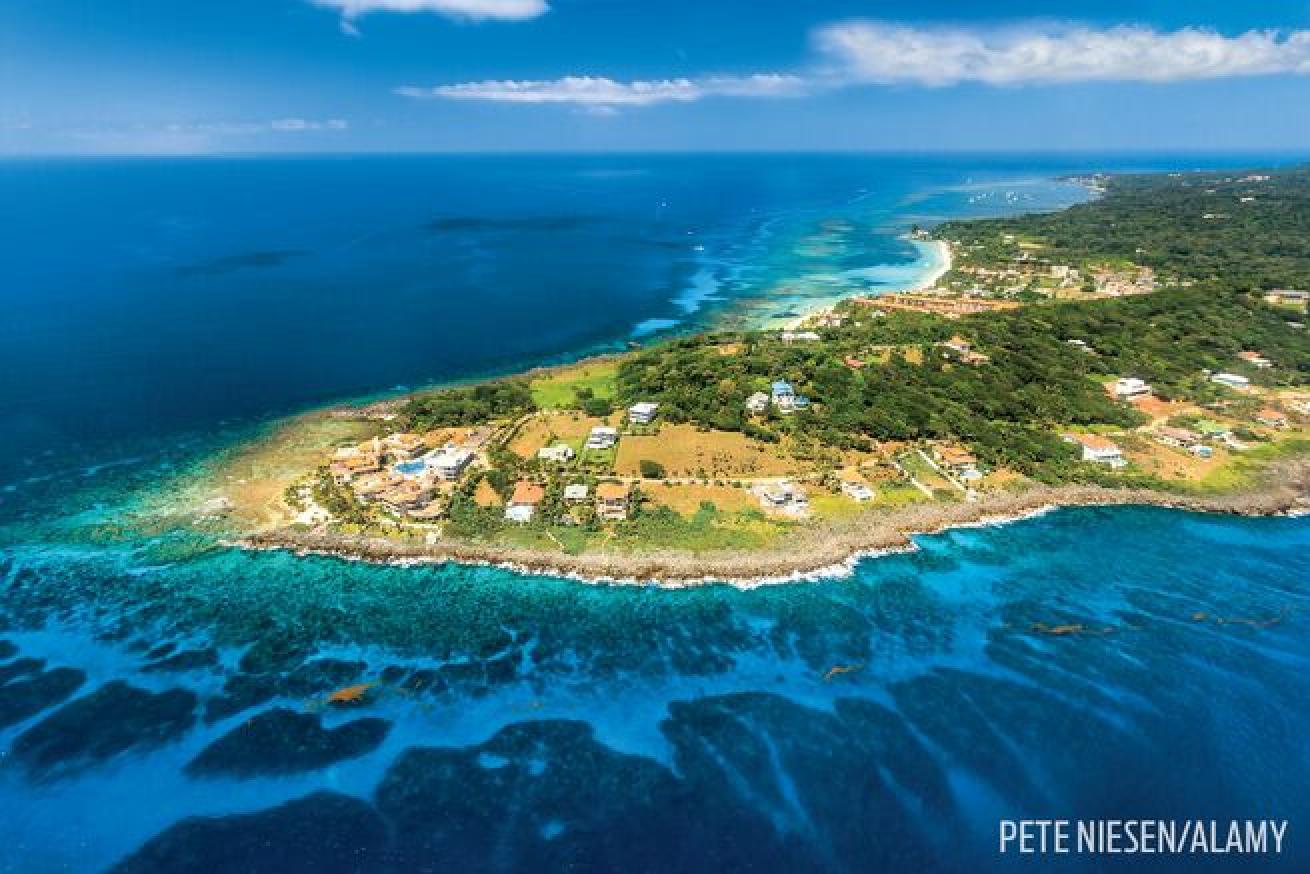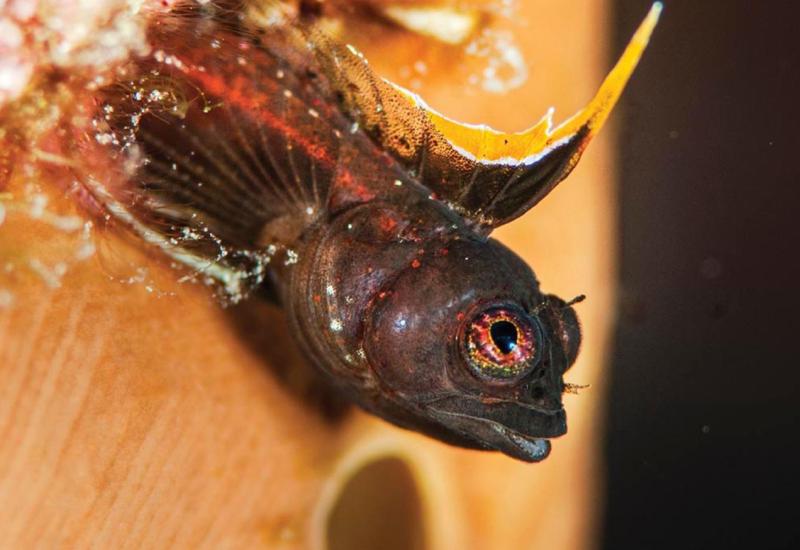Top 10 Caribbean Islands for Scuba Diving
They’re favorites for a reason, but the sunken cruise ships, schooling sharks and offshore pinnacles that you know about are just the beginning.

Pete Niesen/AlamyThough technically not a one-sport destination — deep-sea fishing is also popular — Roatan’s guests primarily travel to let their inner dive flag fly.
1. Roatan
Among the diving community, there is no greater paradise for extroverts than the island of Roatan, Honduras. Though technically not a one-sport destination — deep-sea fishing is also popular — Roatan’s guests primarily travel to let their inner dive flag fly. This means no shortage of buddies for a shore or night dive, and come happy hour, talk is certainly tending toward the 110-foot visibility at West End Wall, or the rowdy school of grouper on the 230-foot wreck El Aguila. mayanprincess.com

Steve SimonsenSt. Croix, of the U.S. Virgin Islands, impresses with reef life.
2. St. Croix
Rare is the Caribbean destination that offers wall, reef and wreck diving in the same day, but St. Croix, one of the U.S. Virgin Islands, delivers this and more. Start on the north shore for the day’s deepest dives along the wall. Picks like Cane Bay or Twin Palms allow easy road access, leading to a 10- to 15-minute swim to the wall’s edge. There, water clarity of 100 feet and greater opens most divers’ eyes to a host of life, from hawksbill sea turtles to shoals of squid.
Opt next for the wrecks of Butler Bay, just outside the town of Frederiksted on the west end of the island. Of the five, the shallowest three offer the safest profile, and can be accessed from shore by fit divers or via an afternoon boat-dive excursion.
End the day with a night dive, staying out west, where the reef slope is gentle, allowing longer bottom times. Shallow sites, such as the Aquarium, can bring sightings of lobsters, eels and seahorses — a strong ending to a scuba diving trifecta. stcroixscuba.com

Jose Alejandro AlvarezThe middle of Cozumel's west coast tends to be preferred by newer divers honing buoyancy skills as they ride the conveyor-belt current.
3. Cozumel
Beyond its reputation as a rite of passage for just-certified divers, Cozumel poses challenges to even the most experienced divers. The middle of the west coast tends to be preferred by newer divers honing buoyancy skills as they ride the conveyor-belt current. It’s the southern tip where things truly get wild. Devil’s Throat offers a narrow tunnel in the wall, swallowing divers only to spit them out at 130 feet, pushing the limits of recreational diving. Farther south still lies Maracaibo, where a rock arch at 115 feet leads to one of the island’s most memorable wall dives, down a sheer face frequented by spotted eagle rays and Caribbean reef sharks. presidentecozumel.com

Cees TimmersSaba's a Caribbean hidden gem.
4. Saba
Sure, every dive is the chance to encounter unexpected wildlife. But Saba, a satellite island of St. Maarten, stacks the deck. Start with the island’s offshore pinnacles, each like an underwater mountain: deep, and far enough offshore to serve as a beacon, attracting hammerheads, dolphins and any other passers-by. Plus, like the jungle-covered island above, where vines and air plants fight to claim every square inch, so too is the environment below the waterline. Sponges jam themselves in between corals with intensity, creating a habitat irresistible to seahorses and frogfish. The only catch: Consider this an excellent proving grounds. Divers must navigate currents to drop in on the pinnacles. To spy a frogfish, you’ll need a trained eye. Luckily, those still working toward advanced diver certifications need not count this island out. Though dive guides can’t help you with the currents, they can pick an itinerary that takes advantage of nearshore reefs, and they’ll certainly point out any camouflaged critters, be it a flying gurnard or scorpionfish that you might overlook. seasaba.com
Related Reading: Unwind on Petit St. Vincent, in St. Vincent and the Grenadines
5. Grenada
Off the Lesser Antillean island of Grenada, there’s a bottleneck — but not of traffic. The entire Gulf Stream surges through this narrows, creating the big-fun currents this island is known for and making nearly every dive a drift dive. “You’re nearly always diving alongside a shark,” says Gerlinde Seupel, co-owner of Aquanauts in the town of Grand Anse. The island is also famous among wreck divers as the home of M/V Bianca C, a 600-foot former passenger liner sitting between 100 and 165 feet of water. In fact, Grenada is a wreck lover’s dream; more than a dozen wrecks lie offshore. aquanautsgrenada.com

Constantinos Petrinos/NPL/Minden PicturesWith many interesting subjects and crystal-clear water, underwater photographers love Bonaire.
6. Bonaire
That Bonaire ranks as the No. 1 shore-dive location in the Caribbean — and beyond — isn’t news. Here’s what is: Buddy Dive Resort just added six Aquaprop underwater scooters to its rental-gear inventory.
“A lot of people have been coming here for years and know all the dive sites, but these scooters change everything,” says Augusto Montbrun, dive operations manager for the Kralendijkbased resort. “Most divers who’ve done the Salt Pier do one dive and see only half of the pier. With a scooter, you can cover the whole pier.”
Divers who prefer boat diving to shore diving can be dropped at one site, then head back to the Buddy Dive house reef with their scooter.
With the one-way drop, guests have been able to do up to five dive sites — Andrea 1 and 2, Petrie’s Pillar, Small Wall and Cliff — before returning.
Adds Montbrun, “People don’t expect how powerful the scooters are, or how far they bring you — for most divers, they really end up being a wow.” buddydive.com
7. Tobago
“Off Speyside, you get the merging of a sea and an ocean — the Caribbean and the Atlantic — and that fosters a lot of current,” Tian Watson, manager of Blue Waters Inn Div’n, says of the town located on the northeast tip of the island.
And these currents reach up to 1.5 knots. “You jump in, and it’s action time,” says Watson. “We also have relaxed diving — fluffy diving, as we call it.”
Fluffy dives carry divers above lush sponge gardens, resulting from the island’s population of hawksbill turtles.
“They’re messy eaters, so those messy bits drift a bit and you get new sponges,” says Watson. “That’s why they’re so prolific down here.”
If a diver has time for just one site, Watson endorses Japanese Gardens.
“It starts off nice and relaxed, and then it picks up, and in the current, there are tarpon, bar jacks and occasionally a manta or shark. You really can see anything on this dive.” bluewatersinn.com
Related Reading: 5 Best Dive Sites in St. Croix
8. Statia
The biggest reason to dive Sint Eustatius, aka Statia — a Dutch island roughly in the middle of the Caribbean arc from the Dominican Republic to Trinidad — is the artificial reef known as Charles L. Brown, a 300-foot cablelaying ship lying in 100 feet of water.
And the smallest, at least in terms of size, might be the blue beads, once the currency used by slaves to buy their freedom, now scattered across the sand of several dive sites and free to keep among finders. facebook.com/goldenrockdivecenter
9. St. Lucia
“This island is very good for people who don’t like long, rough boat rides,” says Charlotte Faulkner, adventure sports manager at Anse Chastanet Resort on St. Lucia, where most of the dive sites lie clustered on the leeward side of the country.
The honeymooner- favorite destination also ranks high among underwater photographers who prefer shooting landscapes or macro images.
“We have a high density of corals and huge sponges — I’ve never seen any bigger,” she says.
Adds Faulkner, “What you won’t find are big pelagics, like sharks or mantas.”
But among all the corals lies a vibrant community of tiny life, from frogfish and jawfish to nudibranchs and octopuses. caradonna.com

Charo Gertrudix/Ultima FronteraThe Cayman Islands are as close to a sure thing as one can find in the sport of diving.
10. Cayman Islands
With record-setting visibility, thriving reefs that support a resident population of sharks and a variety of underwater attractions, the Cayman Islands are as close to a sure thing as one can find in diving.
Grand Cayman is the most visited of the trio, famous as much for wall dives and the 251-foot artificial wreck of the USS Kittiwake as it is for the East End, where sharks are encountered daily.
The highlight of the neighboring island of Cayman Brac is the M/V Captain Keith Tibbetts, the only divable Russian warship in the Western Hemisphere.
Little Cayman, a favorite among marine biologists, is prized for “an extremely high level of biodiversity that’s exceptionally healthy,” says Neil van Niekerk, with the Southern Cross Club, a resort on the outpost island. Moreover, with its lack of development, Little Cayman can steer guests to expect isolation on land and in water. Other than fellow boat mates dropping in together, divers won’t see another soul on the reefs. Says van Niekerk, “It’s a level of tranquility that’s truly hard to find.” southerncrossclub.com










